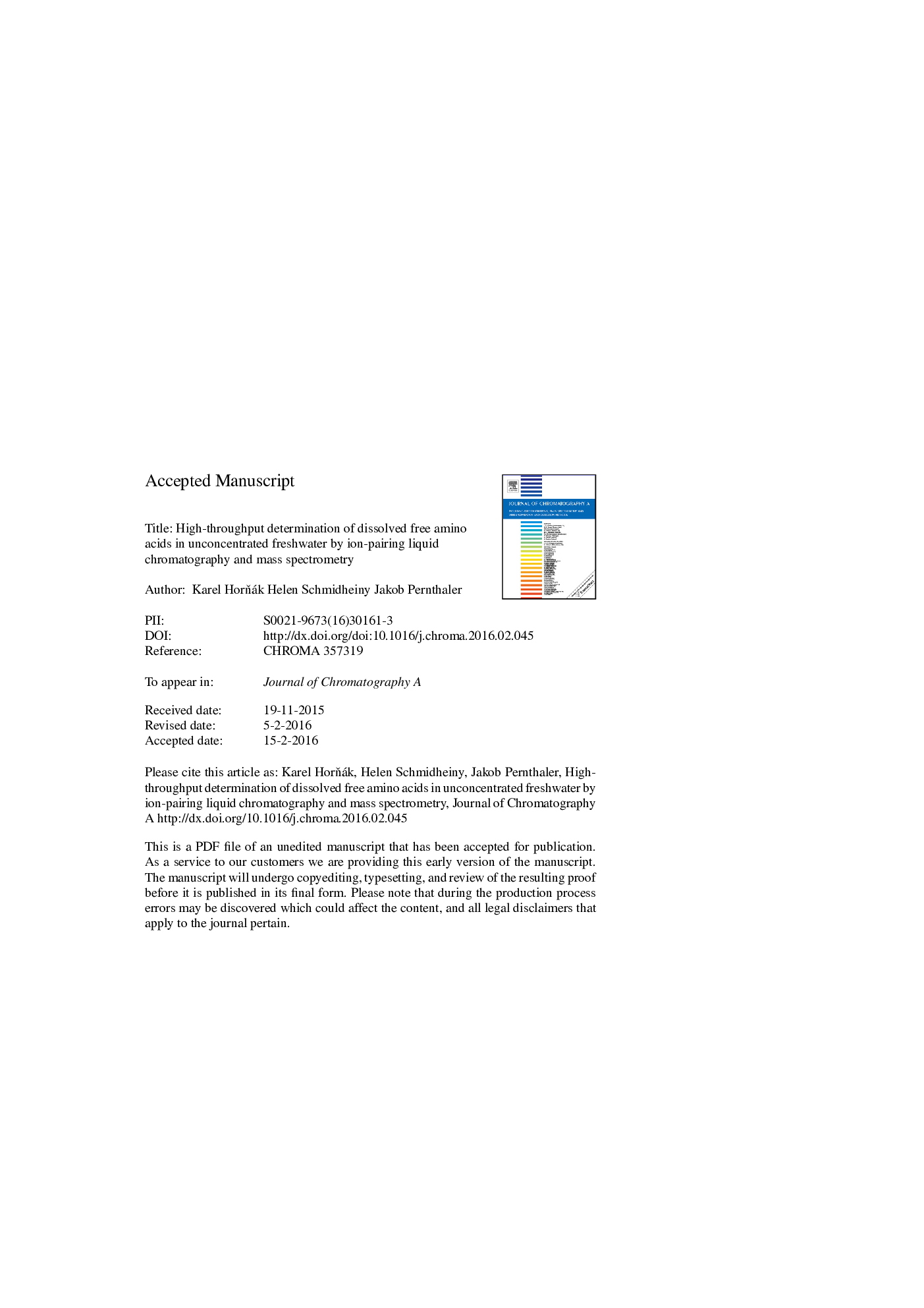| Article ID | Journal | Published Year | Pages | File Type |
|---|---|---|---|---|
| 7610109 | Journal of Chromatography A | 2016 | 34 Pages |
Abstract
We developed a procedure for the direct determination of dissolved free amino acids (DFAAs) in freshwater samples employing ion-pairing liquid chromatography and mass spectrometry. Our approach allowed accurate quantification of subnanomolar concentrations of DFAAs without prior concentration, derivatization or sample clean-up steps, achieving a throughput of three samples per hour. DFAAs were separated on a C-18 resin using tridecafluoroheptanoic acid as an ion-pairing agent controlling the overall retention. The relative standard deviation of DFAA measurements was <10% in samples from the mesotrophic Lake Zurich (Switzerland), and across concentrations of 0.5-500Â nM. Recoveries of DFAAs ranged from 94 to 102% within the range of 0.2-10Â nM. The limits of quantification for individual DFAAs varied between 50Â pM to 2Â nM (median, 0.5Â nM). The new method was employed to compare the spatial variability of DFAA concentrations in samples obtained by two devices. Epilimnetic samples of different size (ml, l) were collected at various spatial scales (cm, m, km) with a traditional 5Â l Friedinger sampler and with a custom-made multi-syringe sampling apparatus. Concentrations of total DFAAs ranged from 30 to 330Â nM. Alanine, serine, glutamic acid, arginine and glycine constituted 65% of the total pool, while methionine and tryptophan occurred at sub-nM concentrations only. Concentrations of individual DFAAs varied spatially over 2 orders of magnitude. Their spatial distribution was positively skewed, as characterized by rare peaks, most strongly so for glutamate, glycine and asparagine. The composition of DFAAs significantly differed at all examined spatial scales, and this could be mainly attributed to alanine, aspartic acid, and glycine. Our new method equals or outperforms existing ones in terms of sensitivity and reproducibility, while its procedural simplicity renders it superior for the high-throughput analysis of freshwater samples.
Related Topics
Physical Sciences and Engineering
Chemistry
Analytical Chemistry
Authors
Karel HorÅák, Helen Schmidheiny, Jakob Pernthaler,
